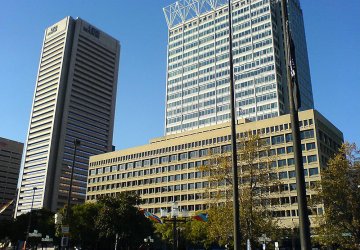22 September 2014 - T. Rowe Price, a leading independent US, global investment management firm, recently implemented Planon’s Sustainability Management solution to enable them to track their waste, recycling, and greenhouse gas emissions as well as past, present and future LEED projects – all in one database.
“T. Rowe Price has a corporate goal of attaining a minimum of LEED Silver on all renovation and new construction projects,” said Kelli Costa, Facilities and Services Manager at T. Rowe Price and a LEED-accredited professional. “With Planon’s software, we now have the ability to track our LEED project strategies and monitor how we are achieving them during the project as well as how we are doing against them on an ongoing basis. We strive to make continuous improvements, and the best way to do that is to precisely monitor what and how we are doing.”
Buildings typically consume more than a third of the total energy in an industrialised economy. During economically challenging times, this presents both an environmental and an economic challenge. By combining the financial perspective on sustainability with emission and consumption data – and forecasts – Planon’s Sustainability Management software gives T. Rowe Price a holistic solution.
“Research shows that buildings represent more than 30 percent of global CO2 emissions and energy costs continue to rise. At the same time, sustainable organisations are more attractive to customers, new employees, and shareholders,” comments Pierre Guelen, Founder and CEO of the Planon Group. “Improving the sustainability of T. Rowe Price’s buildings and processes is therefore more than green idealism—it is based on sound business principles.”
T. Rowe Price previously collected and reported on various sustainability data, ranging from energy consumption to waste, however, it has been in very disparate locations and formats.
“Since launching Sustainability Management with Planon, we now have all key sustainability data in one place, allowing us to easily analyse performance and make sound recommendations to the organisation regarding new strategies across consumption, carbon and cost categories. People at all levels are excited about our new capabilities,” says Brian Dean, Head of Facilities Management.
By linking these functionalities, the company creates a continuous cycle of improvement and savings, based on widely accepted standards such as LEED and BREEAM. Because Dean is directly responsible for more than two million square feet of office and workspace globally, this results in significant opportunities for energy, refrigerant and waste reductions – and financial savings.
Energy consumption is influenced by numerous factors, including HVAC equipment, the building structure, occupier behaviour and weather conditions. Consumption data can show that the energy consumption of a building was reduced by 5% but software like Planon’s can enrich this consumption data with other information, such as weather conditions and space utilisation.
